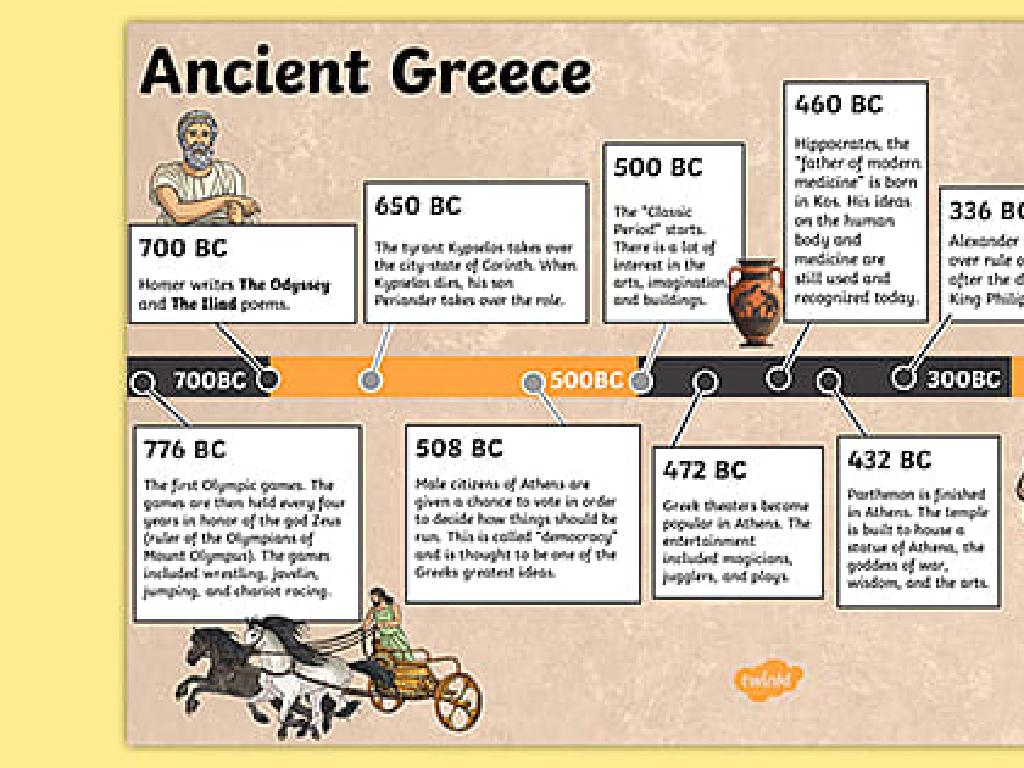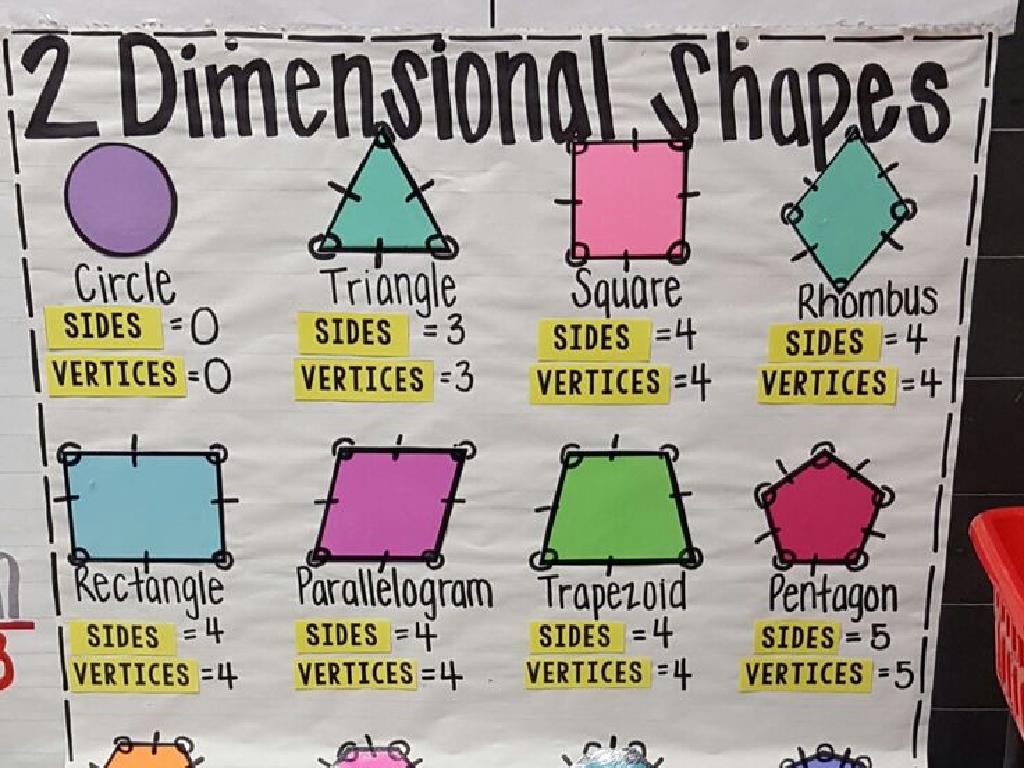Match The Quotations With Their Themes
Subject: Language arts
Grade: Seventh grade
Topic: Theme
Please LOG IN to download the presentation. Access is available to registered users only.
View More Content
Exploring Themes in Literature
– Define ‘Theme’ in stories
– Theme is the central topic or idea explored in a story
– Uncover the underlying message
– Look for lessons, morals, or messages beyond the plot
– Recognize common literature themes
– Examples: courage, friendship, the quest for identity
– Analyze themes using quotations
– Match quotes to themes to see how they’re reflected in the text
|
This slide introduces the concept of ‘Theme’ in literature, which is a foundational element in the study of Language Arts. It’s important for students to understand that a theme is not just a subject or a topic, but a specific point that the text is making about that subject. Encourage students to think beyond the surface details of a story and consider what deeper message or insight the author is trying to convey. Provide examples of common themes and discuss how they can be identified in different texts. Use quotations from well-known works to illustrate how themes are woven into narratives. This will prepare students for activities where they will practice matching quotations to their corresponding themes.
Discovering Themes in Literature
– Identifying story themes
– Look for recurring elements or messages
– Patterns, symbols, and motifs
– Symbols may represent larger ideas
– Theme vs. plot and moral
– Theme is the underlying message, not the storyline or lesson
– Practice with quotations
|
When teaching students to identify themes, emphasize that themes are the underlying messages or central ideas in a story. They are different from the plot, which is the sequence of events, or the moral, which is the lesson the author wants to convey. Encourage students to look for patterns in the characters’ actions or events that point to a larger message. Symbols and motifs are objects, figures, or colors used to represent abstract ideas and help in identifying themes. For example, a recurring image of a bird might symbolize freedom. To practice, provide students with quotations from texts and ask them to infer the theme based on the context of the quotes. This exercise will help them distinguish between themes, plots, and morals, and understand how quotations can reflect the theme of a literary work.
Exploring Themes Through Quotations
– Quotations mirror the theme
– A quote can encapsulate the central idea or message.
– Analyze language for themes
– Look at word choice and context clues to determine the theme.
– Interpret quotations
– Understanding quotes is key to grasping the theme.
– Significance of theme discovery
– Finding themes enriches reading comprehension and critical thinking.
|
This slide aims to teach students how to identify the theme of a literary work by examining quotations. Emphasize that quotations often reflect the core themes and can provide insight into the author’s message. Encourage students to analyze the language used in quotations and the surrounding context to infer the theme. Discuss the importance of interpreting quotations correctly, as this skill helps in understanding the deeper meaning of texts. Highlight that recognizing themes is crucial for deeper engagement with literature and enhances analytical skills. In the next class, students can practice by matching quotations from a text with their corresponding themes.
Matching Quotations with Themes
– Match quotes to themes from readings
– Consider the author’s message
– What is the deeper meaning behind the words?
– Discuss the connection to the theme
– Why does this quote represent the theme well?
– Reflect on the significance of the quote
– How does the quote enhance our understanding of the theme?
|
This slide is designed for a class activity where students will engage in matching quotes from their reading list to the themes they represent. Encourage students to think critically about the author’s intent and the message conveyed through the quotes. Facilitate a discussion on how each selected quotation illustrates its corresponding theme and ask students to articulate their reasoning. This exercise will help students to deepen their understanding of literary themes and how they are reflected in specific passages of text. It’s also an opportunity to foster analytical thinking and interpretation skills. Provide guidance and examples to help students make meaningful connections.
Group Activity: Matching Quotes to Themes
– Form small groups for the activity
– Each group gets quotations and themes
– Match quotes to the correct themes
– Consider what the quote is really about to find its theme
– Discuss the choices within the group
– Share thoughts on why a quote represents a theme
|
This group activity is designed to enhance students’ understanding of literary themes and how they are reflected in quotations. Divide the class into small groups to foster collaboration. Provide each group with a diverse set of quotations and a list of possible themes. The task for each group is to match each quotation to one of the themes provided. Encourage students to discuss the reasoning behind their choices, promoting critical thinking and interpretation skills. Possible themes could include friendship, courage, love, or perseverance. After the activity, have a group representative share their matches and the thought process behind them with the class. This will help students see different perspectives and understand the depth of literary analysis.
Class Discussion: Exploring Themes through Quotations
– Groups present their theme matches
– Share why you think the quote matches the theme
– Class votes on the most fitting matches
– Why did you choose one match over another?
– Discuss varied interpretations
– Understand that themes can be seen differently
– Reflect on the activity and learnings
|
This slide sets the stage for an interactive class discussion where students will engage in critical thinking by sharing and defending their matches of quotations to themes. It’s an opportunity for students to practice articulating their thoughts and to learn from their peers’ perspectives. The voting process will encourage students to consider the strength of the connections made by their classmates. During the discussion of different interpretations, emphasize the subjective nature of literature and how personal experiences can influence one’s understanding of a theme. Conclude with a reflection to reinforce the skills learned during the activity, such as analytical thinking and respectful debate.
Reflection on Understanding Theme
– Importance of theme comprehension
Understanding theme gives deeper insight into the message of a text.
– Themes enhance reading skills
Identifying themes helps us to better grasp the story and its characters.
– Themes enrich writing skills
Knowing themes can improve our own storytelling and writing style.
– Personal reflection on the activity
|
This slide encourages students to reflect on the significance of theme in literature. Understanding the theme of a story goes beyond just reading for plot; it involves recognizing the underlying messages and ideas that the author wants to convey. This understanding can lead to a more profound appreciation of literature and its relevance to our lives. Identifying themes can also sharpen students’ analytical skills, which are crucial for academic success. Furthermore, understanding how themes are developed in texts can inspire students to incorporate themes into their own writing, making their stories more impactful. Encourage students to think about how the activity of matching quotations with themes has affected their perception of the texts they read and their approach to writing.
Homework: Connecting Quotes to Themes
– Find a thematic quote in your book
– Write a paragraph on its significance
– Reflect on how the quote supports the book’s theme
– Explain the quote-theme connection
– Consider the quote’s context and its thematic message
– Get ready for a class discussion
|
This homework assignment is designed to help students practice identifying themes within a text and understanding how specific quotations support those themes. Students should select a meaningful quote from their current reading material that they feel represents a central theme of the work. They will then write a paragraph explaining how the quote connects to the theme, considering the context in which the quote appears and its broader implications within the text. Encourage students to think critically about the themes and to express their interpretations clearly. In the next class, be prepared to facilitate a discussion where students can share their quotes and explanations, fostering a deeper understanding of thematic elements in literature.






